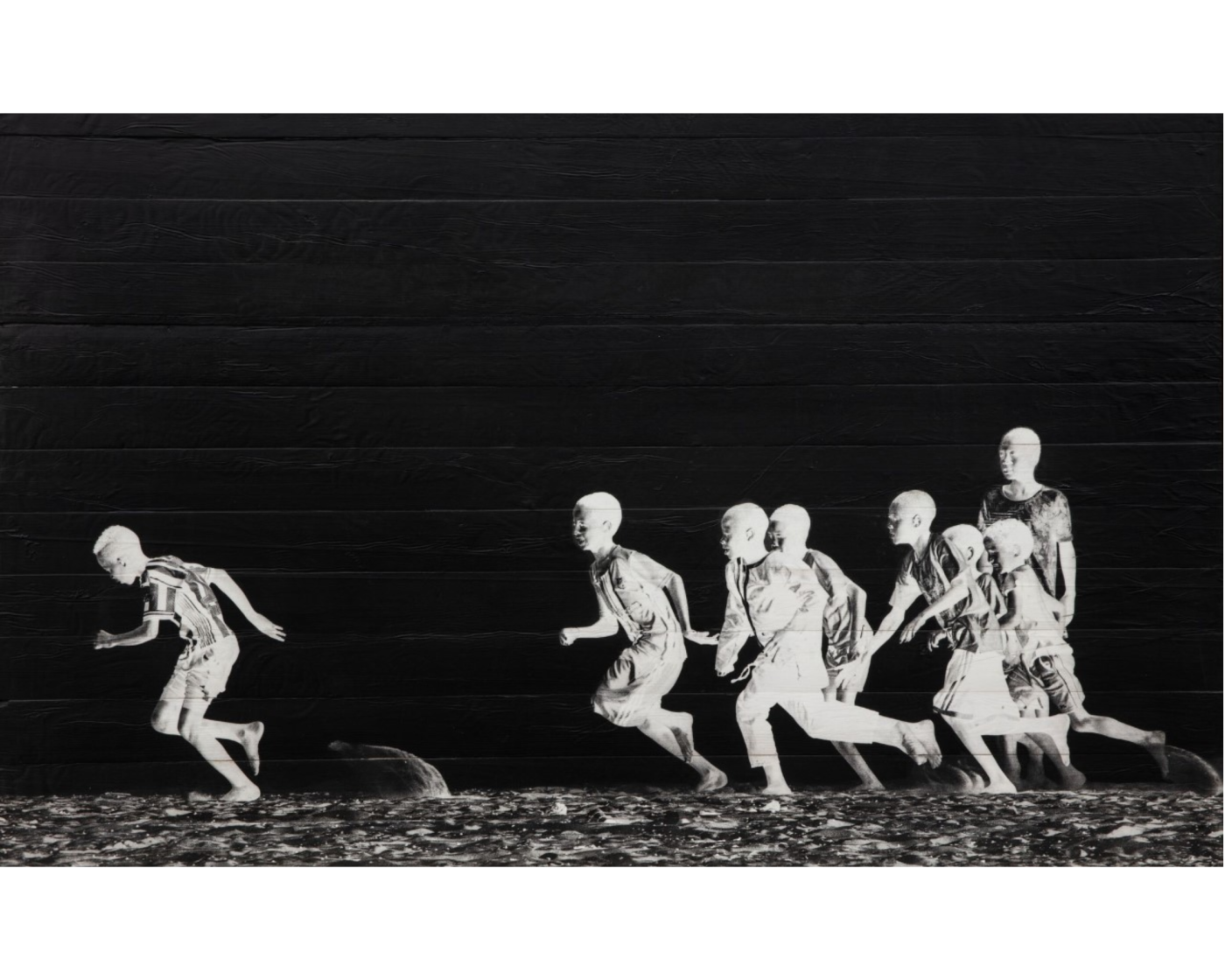Les Enfants d’Ouranos is a new work by artist JR (b. 1983, Paris, France) presented as a large-scale, site-specific installation on the south façade of the Museum for an entire year. The 200-foot long banner, depicting children playfully running, will cover much of the exterior wall and be visible from Montauk Highway. JR’s presentation follows previous façade installations by Hank Willis Thomas, Martin Creed, and Clifford Ross.
Les Enfants d’Ouranos (Children of Ouranos) continues JR’s previous work for Déplacé.e.s, featuring children from refugee camps in Rwanda, Ukraine, Mauritania, Greece, and Colombia. The project comprised aerial photographs of 170-foot-long banners—carried by groups of people around the camp or a city—that depict the full image of a child running playfully. Les Enfants d’Ouranos also presents images of carefree children from the same refugee camps playing soccer, but without context. Rather, the children are placed in an idealized playing field where dreams may still come true. The title of the exhibition translates to The Children of Ouranos—referring to the primordial Greek god of the sky who fathered the Titans, the first gods—and associates JR’s subjects with holiness.
For Les Enfants d’Ouranos, JR employs a new technique: Instead of printing the positive image, the artist transfers the negative directly onto wood, thereby alluding to an imprinted, idealized version of youth. In these images, surfaces reflecting light are reversed and presented as shadows, and the shadowed areas are filled with light. JR’s new strategy inverts established processes and hierarchies, upending the status quo. The artist instills images of the children directly impacted by global conflict and living in refugee camps with transcendence and the opportunity to command influence.
The mural will be augmented by Les Enfants d’Ouranos, Bois #6—a large-scale work by JR from his 2022 series—on view in the Museum’s interior lobby gallery from May 27, 2023 through September 9, 2024. In that series, JR transferred negatives of the photograph onto reclaimed wood painted in black ink to create a more dramatic contrast.
The Parrish’s architecture and its interplay with light will allow the children’s silhouettes to shine and be visible to visitors and passersby from afar. This building intervention and JR’s signature artistic practice will become part of the Museum’s dominant public view and will coincide with the institution’s 125th anniversary.
The exhibition is organized by Mónica Ramírez-Montagut, Executive Director, and Corinne Erni, Lewis B. and Dorothy Cullman Chief Curator of Art and Education and Deputy Director of Curatorial Affairs, with support from Kaitlin Halloran, Assistant Curator and Publications Coordinator, and Brianna L. Hernández, Assistant Curator.
Exhibition Support
The JR: Les Enfants d’Ouranos exhibition is made possible, in part, thanks to the generous support of Duggal Visual Solutions, Perrotin, Alexandra Stanton and Sam Natapoff, Domna Stanton, and Susan and Frank Dunlevy/Dunlevy Family Charitable Fund.

The Parrish Art Museum’s programs are made possible, in part, by the New York State Council on the Arts with the support of Governor Kathy Hochul and the New York State Legislature, and by the property taxpayers from the Southampton School District and the Tuckahoe Common School District.
About JR
JR works at the intersection of photography, street art, filmmaking, and social engagement. Over the last two decades, he has developed multiple public projects and numerous site-specific interventions in cities all over the world: from buildings in the slums around Paris, to the walls in the Middle East and Africa or the favelas of Brazil.


